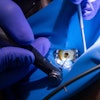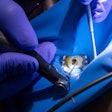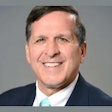Can you cure your patients' nagging headaches, skin diseases, and other maladies by removing their amalgam (mercury) fillings? You might, suggests a new German study in the April issue of the Journal of Dental Research.
But it's not the only way to eliminate what patients consider amalgam-related complaints. You could also relieve their woes simply by prescribing a healthier lifestyle, the authors suggest.
Researchers studied 90 patients whose complaints could not be explained by a medical or psychological disorder. They divided the patients into three groups:
- Those who had their amalgam fillings removed (removal group).
- Those who had amalgam removed and received biological detoxification in the form of high vitamin doses and trace elements (removal-plus group).
- Those who simply participated in a health-promotion program that included good nutrition, exercise, and relaxation techniques (no-removal group). This last group did not have amalgams removed.
Participants were between the ages of 20 to 50 and reported at least 10 symptoms -- with three of strong intensity -- that suggested their health complaints were caused by amalgam.
Researchers gave patients a list of 50 symptoms and asked them to rate severity of symptoms on a scale of 0-3 (0 = not present to 3 = strong intensity), and then asked them to rate their three main complaints on a scale of 0-9 (0 = not present to 9 = extreme) to get a weighted sum score. The procedure was repeated one, two, six, 12, and 18 months from the start of study.
The most common complaints were skin disease, headache, mental complaint (nervousness, sleeplessness), general tiredness/weakness, or an infection/low resistance to infections. Less frequently reported woes included allergies, sensory disturbances, and urological, gastrointestinal, and cardiovascular symptoms.
After 12 months, the main-complaints sum score for the removal and removal-plus groups dropped by an average of 3.5 points. The no-removal group saw a drop of 2.5 points.
"The focus of this controlled trial was to investigate treatment options for so-called 'amalgam patients,'" wrote the study authors. "The improvements observed in all groups were clinically relevant and persisted throughout the follow-up period of 18 months."
Although removing mercury fillings (with or without biological detoxification therapy) reduced patients' health complaints, so did a regular health-promotion program without amalgam removal, the authors noted.
"The strong effects of the health-promotion program on the subjective complaints of 'amalgam patients' were unexpected, especially since we observed only a weak relationship between numbers of treatment sessions and symptom relief," wrote the authors.
The authors suggest that adopting a healthy lifestyle -- which included good nutrition, exercise, and relaxation techniques -- in the no-removal group strengthened the patients' immune system and reduced amalgam anxiety. Then again, it could simply be the placebo effect.
"In our trial, amalgam removal was associated with a marked reduction in the participants' subjective health complaints. However, similar improvements were observed after a health-promotion program without amalgam removal," wrote the authors. Also, "there was a statistically significant improvement in the health of all three groups 18 months later," wrote Dieter Melchart, corresponding author, in an email to DrBicuspid.com.
"Although the reasons for amalgam-related complaints are still unclear, our results suggest that amalgam removal is not the only treatment option, since all treatments were associated with clinically relevant improvements," concluded the authors.















